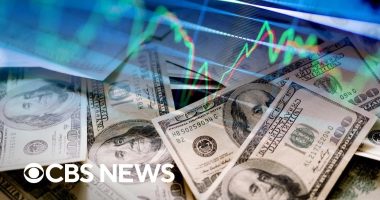The narrative surrounding Ripple and its digital asset XRP is evolving beyond cross-border payments into a far more ambitious vision: restructuring the foundational plumbing of institutional finance. This shift, highlighted by recent strategic moves and a compelling technical forecast, suggests the company is laying the groundwork for a modernized financial ecosystem. According to analysis from prominent figures, including the CEO of Teucrium, Ripple’s acquisition of the non-bank prime broker Hidden Road—now relaunched as Ripple Prime—is a cornerstone of this strategy, coinciding with a technical pattern that points to significant bullish momentum for XRP.
Building the Blueprint for a New Institutional Landscape
The core of this new thesis is Ripple’s push into the prime brokerage space. Prime brokerage, a service traditionally dominated by large investment banks, provides vital infrastructure for hedge funds and asset managers, including securities lending, leveraged trade execution, and cash management. By acquiring and integrating Hidden Road, Ripple is directly challenging this legacy model.
Ripple Prime aims to offer regulated, seamless access to digital assets, effectively removing a major friction point for institutional players. This move provides the crucial bridge that allows traditional finance to interact with digital asset markets securely and efficiently. As noted in a comprehensive report on digital finance by Reuters, the demand for such institutional-grade crypto infrastructure is growing rapidly. By positioning XRP within this streamlined brokerage and custody framework, Ripple is elevating the asset from a utility token for payments to a potential core component of institutional liquidity and settlement.
Modernizing Capital Markets: Beyond Payments
The vision, as articulated by observers like Teucrium’s CEO, is not merely an improvement on existing payment rails but a fundamental modernization of capital markets. Legacy financial systems often rely on a complex web of intermediaries, leading to settlement delays, higher costs, and fragmented liquidity pools. These inefficiencies are a well-documented challenge in global finance, with institutions like the World Economic Forum having published extensive research on the potential for blockchain to reshape financial markets.
Ripple’s ecosystem, powered by the XRP Ledger’s capacity for real-time settlement and its growing focus on tokenizing real-world assets (RWAs), directly attacks these pain points. The integration of Ripple Prime creates a closed-loop system where institutions can access, custody, and transact with digital assets—with XRP acting as a neutral bridge asset—all within a regulated environment. This seamless connection between traditional finance and digital rails has the potential to redefine how value is transferred and managed on a global scale.
XRP Technical Outlook: Entering a Powerful Elliott Wave Phase
This fundamental transformation is occurring alongside a highly optimistic technical analysis. Crypto analysts, including SMQKE, report that XRP is potentially entering the powerful fifth wave of a multi-year Elliott Wave cycle.
For the uninitiated, the Elliott Wave Theory posits that asset prices move in predictable, repetitive wave cycles. The fifth and final wave in a bullish sequence is often the most dynamic, characterized by explosive price movement and accelerating momentum as the asset captures the broad market’s attention. A successful completion of this wave could propel XRP to price levels not seen before, a prospect that is drawing increased scrutiny from both crypto-native and traditional finance traders.
In conclusion, Ripple’s strategy appears to be a two-pronged attack: building the institutional infrastructure for a new digital asset ecosystem through acquisitions like Ripple Prime, while simultaneously benefiting from a technical setup that suggests a major price appreciation is on the horizon. If successful, Ripple won’t just be a payments company; it will have established itself as a foundational pillar of the next generation of Wall Street.









